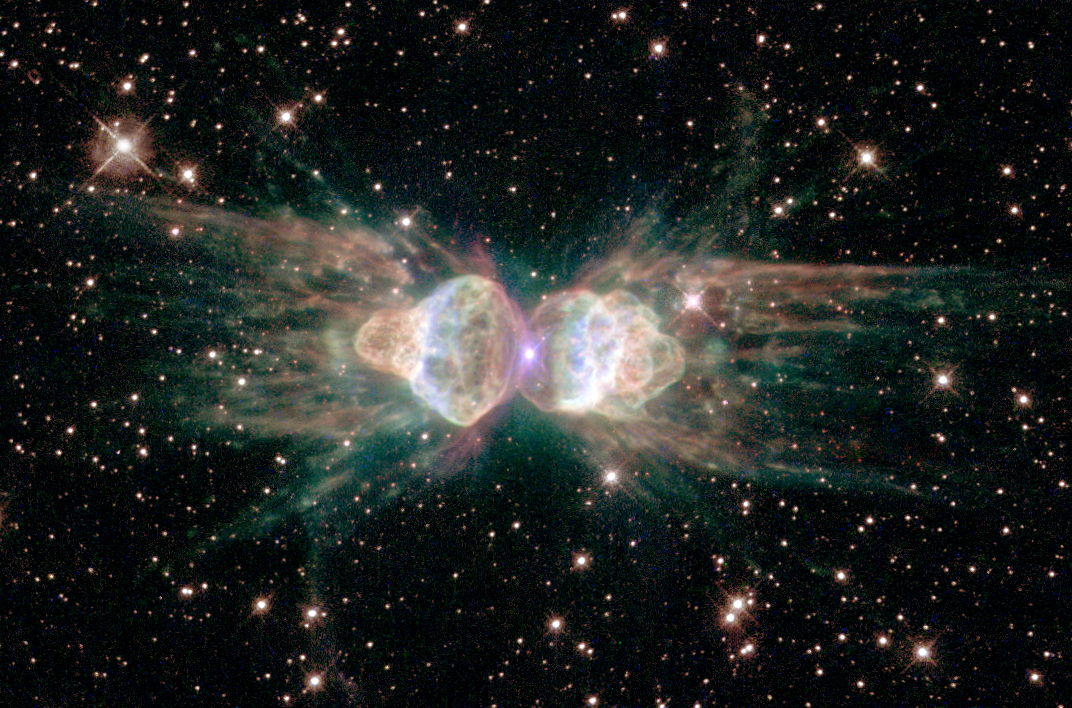
Ant Nebula
From ground-based telescopes, the so-called "ant nebula" (Menzel 3, or Mz 3) resembles the head and thorax of a garden-variety ant. This dramatic Hubble Space Telescope image, showing 10 times more detail, reveals the "ant's" body as a pair of fiery lobes protruding from a dying, Sun-like star. The Hubble image directly challenges old ideas about the last stages in the lives of stars. By observing Sun-like stars as they approach their deaths, the Hubble image of Mz 3 — along with pictures of other planetary nebulae — shows that our Sun's fate probably will be more interesting, complex, and striking than astronomers once imagined. Though approaching the violence of an explosion, the ejection of gas from the dying star at the center of Mz 3 has intriguing symmetrical patterns unlike the chaotic patterns expected from an ordinary explosion. Scientists using Hubble would like to understand how a spherical star can produce such prominent, non-spherical symmetries in the gas that it ejects. One possibility is that the central star of Mz 3 has a closely orbiting companion that exerts strong gravitational tidal forces, which shape the outflowing gas. For this to work, the orbiting companion star would have to be close to the dying star, about the distance of Earth from the Sun. At that distance the orbiting companion star wouldn't be far outside the hugely bloated hulk of the dying star. It's even possible that the dying star has consumed its companion, which now orbits inside of it. A second possibility is that, as the dying star spins, its strong magnetic fields are wound up into complex shapes. Charged winds moving at speeds up to 1,000 kilometers per second from the star, much like those in our Sun's solar wind but millions of times denser, are able to follow the twisted field lines on their way out into space. These dense winds can be rendered visible by ultraviolet light from the hot central star or from highly supersonic collisions with the ambient gas that excites the material into florescence. No other planetary nebula observed by Hubble resembles Mz 3 very closely. M2-9 comes close, but the outflow speeds in Mz 3 are up to 10 times larger than those of M2-9. Interestingly, the very massive, young star Eta Carinae shows a very similar outflow pattern. Astronomers used Hubble to observe this planetary nebula, Mz 3, in July 1997 with the Wide Field and Planetary Camera 2. One year later, astronomers again snapped pictures of Mz 3 using slightly different filters. This intriguing image is a composite of several filters from each of the two datasets. For more information please visit: hubblesite.org/image/1020/news_release/2001-05
